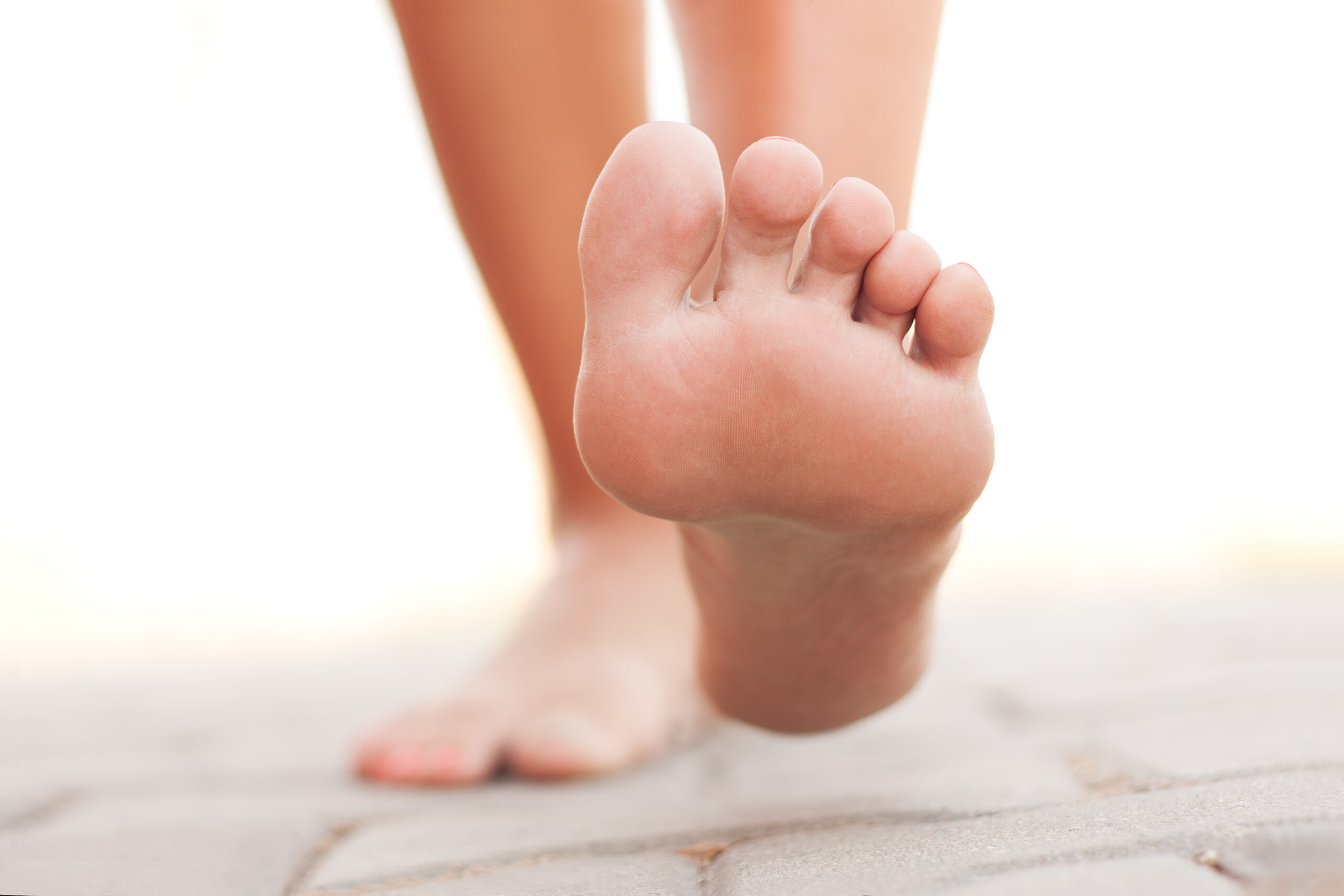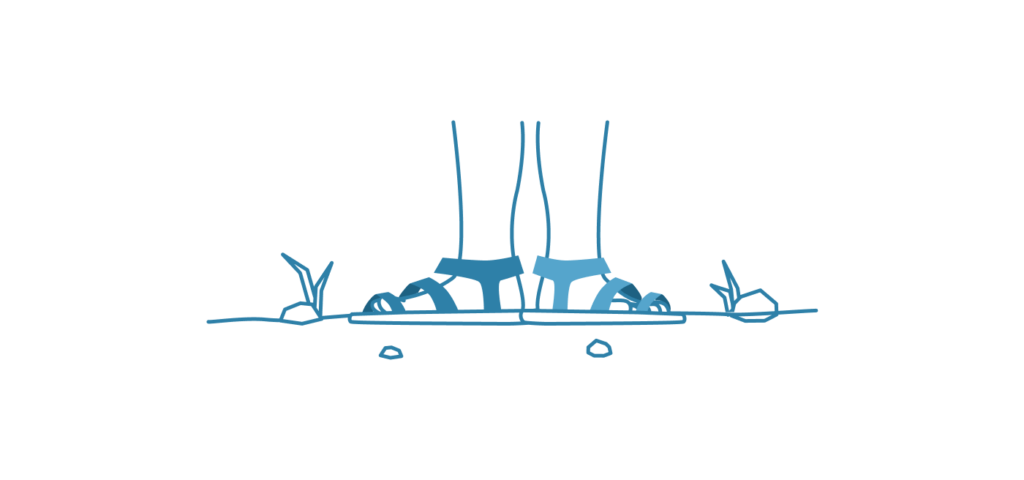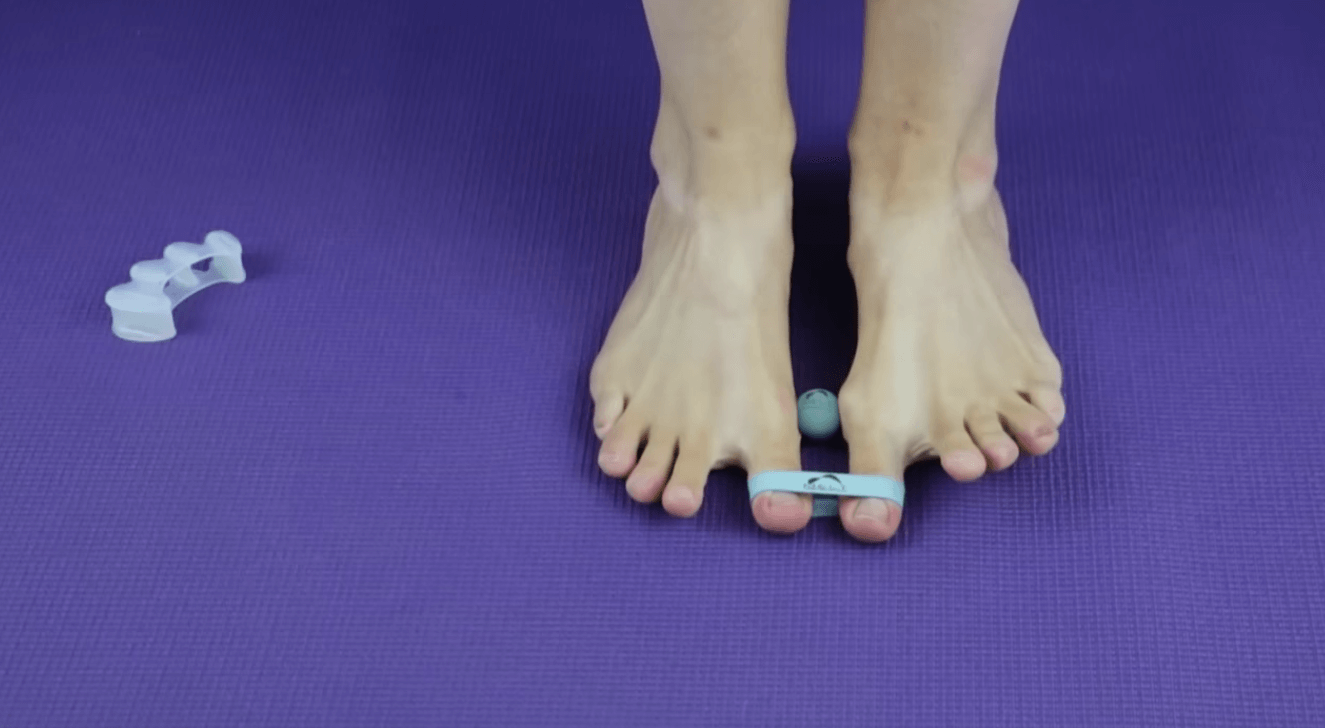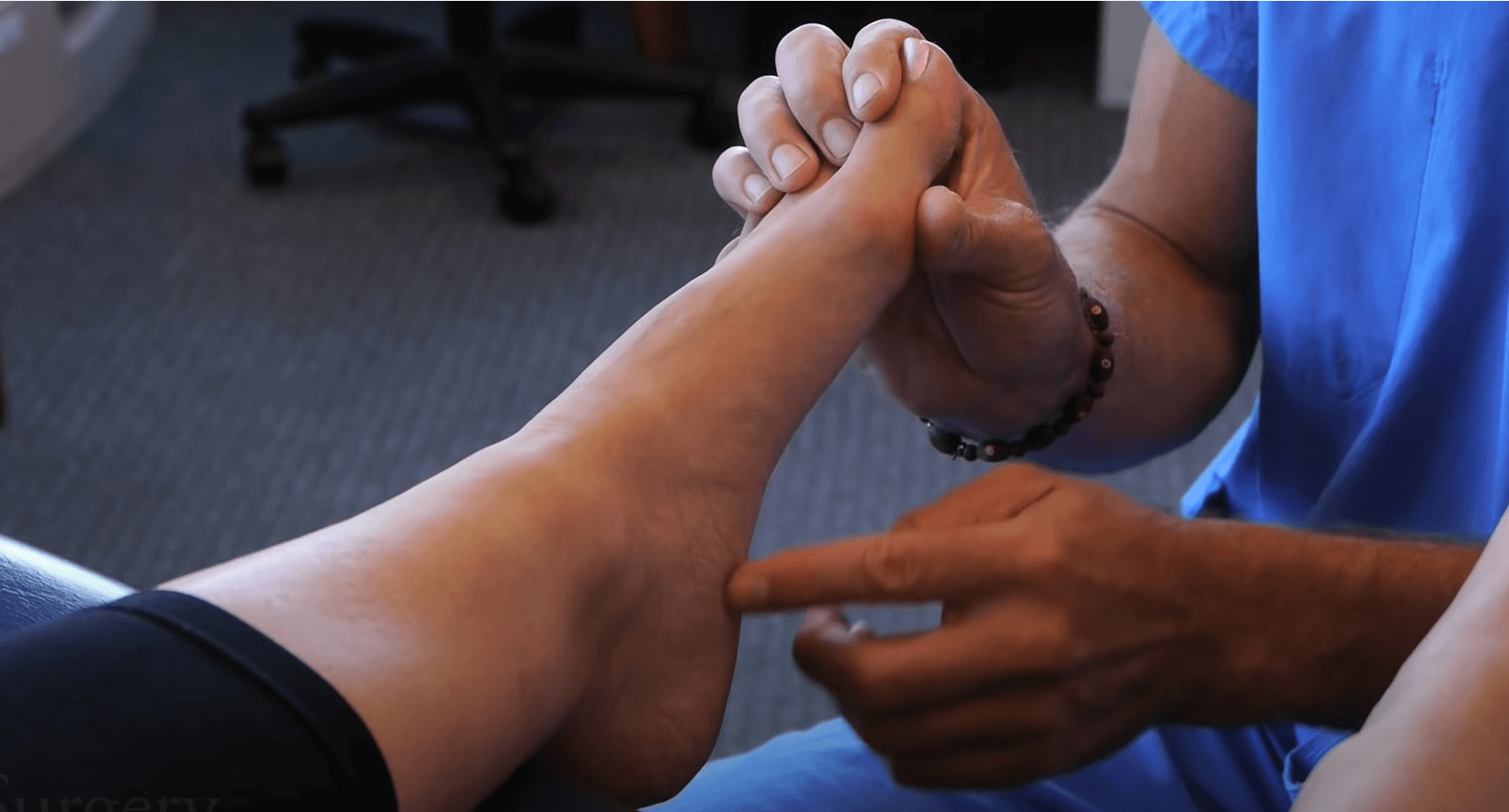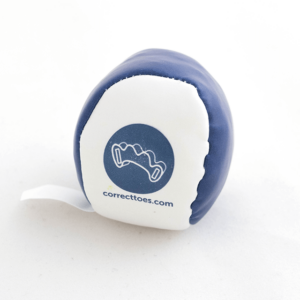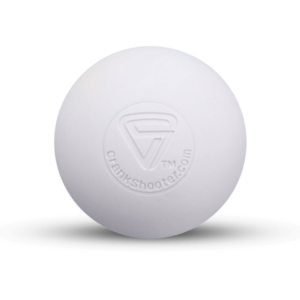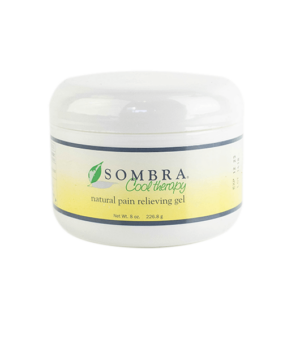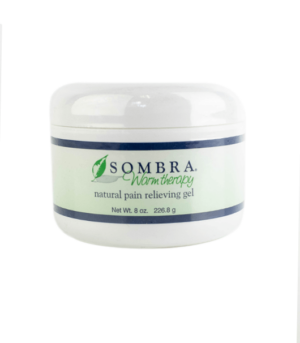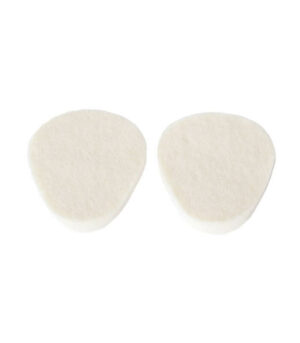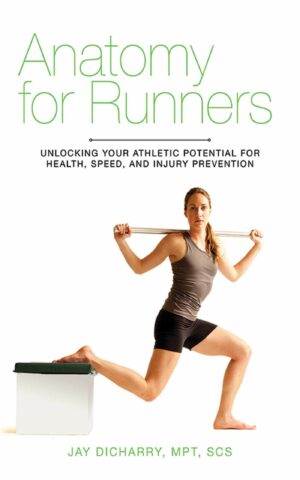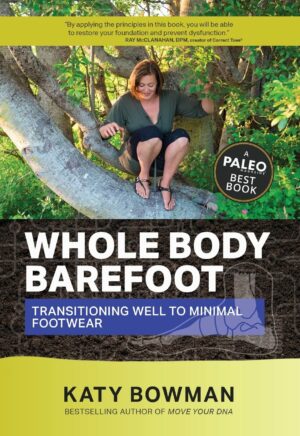In ancient times, before the rise of modern footwear, our ancestors walked the earth, feeling its textures and contours directly underfoot. This natural way of connecting with the ground had its benefits, shaping feet that were resilient and adaptive.
Fast forward to today, and there’s a growing movement to return to this organic, foot-liberating experience, giving birth to the world of natural and barefoot shoes. A comeback! There’s a growing buzz around natural and barefoot footwear. But wait, aren’t they the same thing? Nope! And here’s the lowdown.
Jump to:
- Barefoot Shoes vs Natural Footwear, What’s the Difference?
- How to Transition to Barefoot Shoes
- Why Wear Barefoot Shoes?
- Key Takeaway
Barefoot Shoes vs Natural Footwear, What’s the Difference?
So here’s the deal: Natural footwear, also known as “functional footwear”, is like the umbrella term. It’s all about shoes that let your feet do their thing, move naturally. These can range from snazzy minimalist sandals to those sneakers that still give you a bit of cushioning.
But the key? They always have a zero drop design (no sneaky heel elevation) and fit the natural shape of your foot.
While both natural and barefoot shoes strive to resurrect this age-old experience, distinctions are evident. Natural shoes bridge the gap between traditional footwear and the barefoot realm, offering a closer-to-earth sensation but with the comfort of a protective layer.
Now, barefoot shoes are the purists in this game. Think of them as the folks who prefer their coffee black. They’re all about giving you that near-authentic feel of walking, well, barefoot. It’s just you, the shoe, and the ground with barely anything in between.
So, what’s the game plan? It’s all about understanding the nitty-gritty differences between natural and barefoot shoes and making the switch in style.
Whether you’re starting fresh, in the middle of the transition, or already rocking the barefoot vibe, we’ve got your back (or should we say, feet?).
How to Transition to Barefoot Shoes
Transitioning is more than just a shoe switch; it’s a journey to regain your foot’s natural capabilities.
The foot, with its myriad of muscles and joints, has been restricted by tight, rigid shoes for years, leading to weakness and deformity. Transitioning to barefoot shoes is highly individualistic, influenced by one’s foot condition, footwear history, and barefoot experiences.
Understand that this isn’t like swapping sneakers. It’s about unlearning the habits formed by years of foot confinement and introducing them to freedom again. Consider this a gentle reeducation for your feet and start with…
Step 1: Introduce your feet to a natural foot shaped shoe
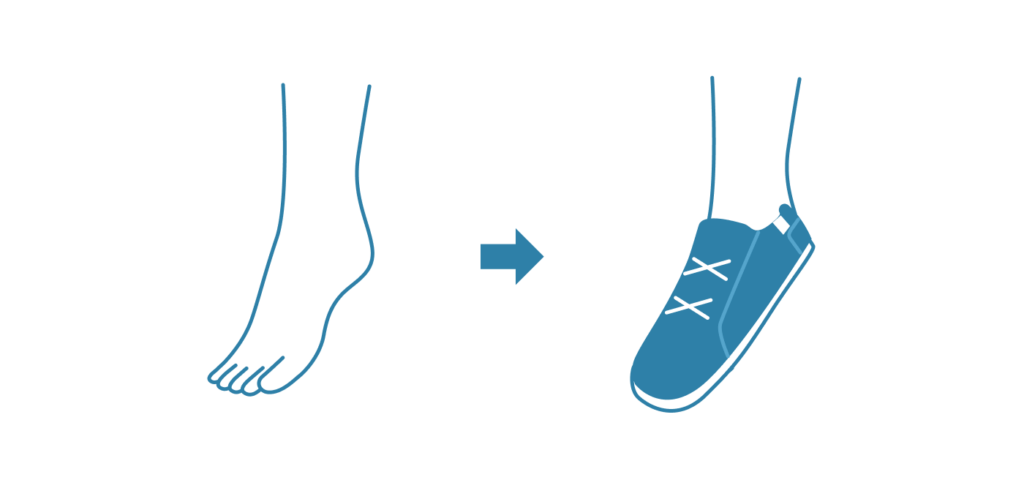 The first step in this journey is to introduce your feet to transition shoes. These shoes maintain a foot-shaped design with zero-drop, yet offer cushioning that conventional shoes provide. This balanced approach eases your feet into their natural form, gradually building their strength and resilience.
The first step in this journey is to introduce your feet to transition shoes. These shoes maintain a foot-shaped design with zero-drop, yet offer cushioning that conventional shoes provide. This balanced approach eases your feet into their natural form, gradually building their strength and resilience.
These transition shoes serve as a bridge between the world of traditional footwear and the realm of foot freedom. It acknowledges the customs we’ve grown accustomed to, like cushioning, while laying the foundation for what our feet truly need— space, alignment, and natural movement.
This isn’t just a physical transition; it’s also changing mindsets. Our feet, overtime, have been accustomed to fit into shoes rather than shoes being designed to fit out feet. Transition shoes aim to reverse this approach.
The cushioning provides a soft introduction. They protect and support while the foot-shaped design begins its work in realigning toes, improving balance, and enhancing overall foot health. By wearing them, you’re allowing your feet to spread naturally, which can lead to better weight distribution and potentially reduced pain.
Remember, this is more than just a style change; it’s a gentle reeducation of your feet, paving the way for a healthier, more natural stride. As you continue, you’ll be well-prepared to explore even more minimalist options, but let’s take it one step at a time.
Step 2: Selecting the Right Shoes
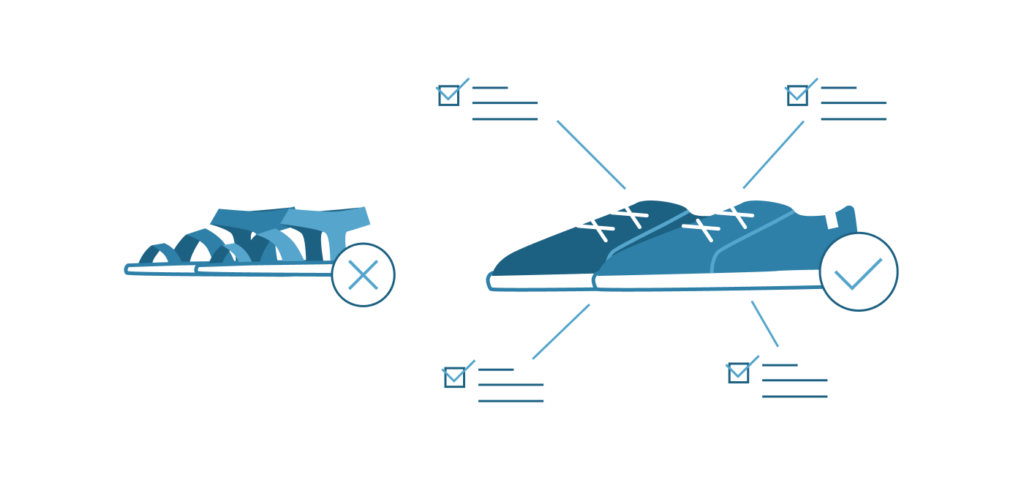 Beyond aesthetics, your first pair of barefoot shoes should provide an optimal blend of support and freedom as you work to transition to your first minimalist shoe which offers little to no unnatural support with maximum freedom..
Beyond aesthetics, your first pair of barefoot shoes should provide an optimal blend of support and freedom as you work to transition to your first minimalist shoe which offers little to no unnatural support with maximum freedom..
Brands like Correct Toes emphasize the need for a wide toe box shoe that allows for natural foot splay and toe alignment. While it’s tempting to choose a design that’s trendy, your priority should be functionality. Seek shoes that offer a balance – snug, yet not restricting; lightweight, yet durable.
Consider materials that breathe well and allow a good feel of the ground. This heightened sense of feeling the ground helps you adjust your gait pattern intuitively, through proprioception, leading to more natural movements.
Zero-drop shoes (shoes with no elevated heel) will be your end goal because this design promotes the most natural posture and alignment. Remember, it’s about shoes letting your feet splay naturally and promoting natural movement.
It’s worth noting that transitioning isn’t solely about the shoe but finding a pair that complements your foot’s unique structure and needs. With the right shoe, you’re not just walking; you’re relearning the art of natural movement.
Step 3: Introduce Barefoot Shoes into Your Day
Starting on the barefoot shoe journey is a mix of excitement and patience. You’re giving your feet a new experience, so ease into it. Remember to take a slow, progressive approach. Wearing your new shoes, like Altra or Vivobarefoot, for just 30 minutes daily, initially, is the best start. Then, gradually increase this time as you get accustomed.
You can experience pain if you try to transition too quickly from shoes with a lot of heel elevation to a zero-drop shoe, especially while exercising. Your feet, ankles and lower legs need time to adjust. Start methodically and allow your feet to acclimatize to the sensations of your minimalist shoes.
Walking barefoot or in minimalist shoes enhances your foot’s proprioception. Over time, you’ll feel a closer connection to the ground, which can improve your balance and gait pattern.
Once you’ve increased time in your new shoes you can begin to introduce activities where you exert yourself. This transition not only helps minimize risk of injury but it also gives you time to increase your foot strength, laying a solid foundation for the future.
When you wear natural foot shaped shoes, every new terrain you traverse improves your foot strength by requiring your muscles to move naturally in maintaining your balance.
Step 4: Patience is Key! Allow Time for Adjustments to Occur
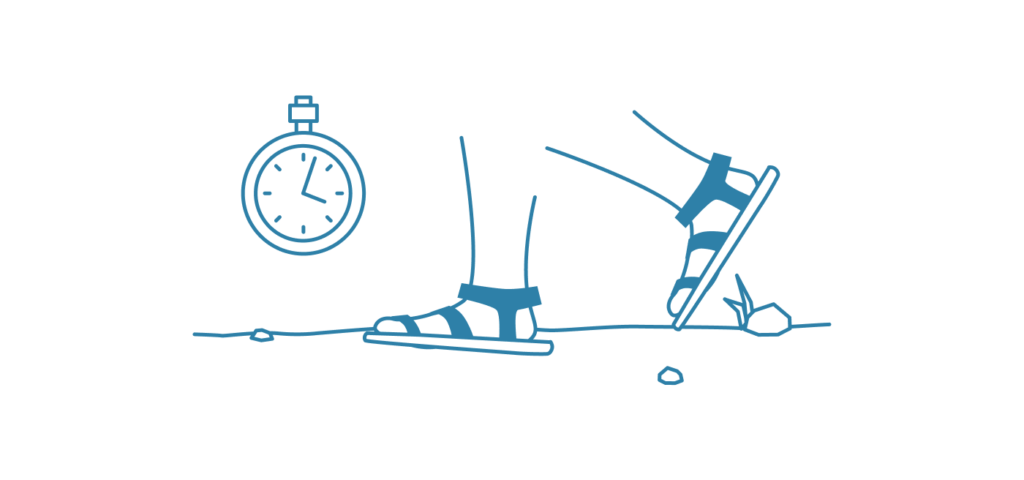 Years of wearing conventional shoes has largely contributed to foot health issues, such as bunions and toe crowding. Transitioning to minimalist or zero-drop shoes requires patience, as foot and toe realignment takes time. This new footwear style promotes a different gait pattern, putting new demands on your foot structure.
Years of wearing conventional shoes has largely contributed to foot health issues, such as bunions and toe crowding. Transitioning to minimalist or zero-drop shoes requires patience, as foot and toe realignment takes time. This new footwear style promotes a different gait pattern, putting new demands on your foot structure.
It’s common to experience initial soreness or foot pain during this transition due to the shift in gait and reduced cushioning. Brands like Altra, Vivobarefoot, and Xero champion the barefoot movement, but it’s crucial to gradually integrate these shoes into your routine. With patience and understanding of foot function, this transition can lead to healthier feet and more natural movement.
Step 5: Address Gait Changes
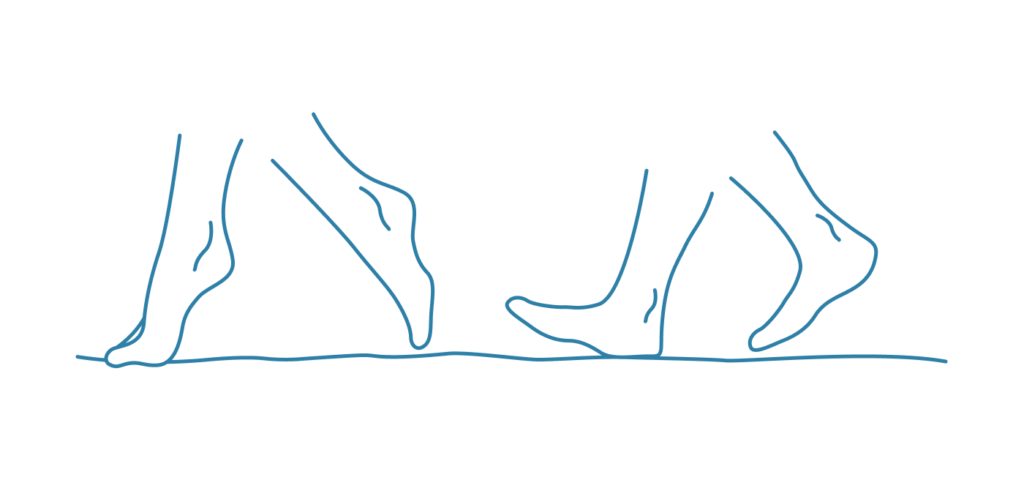 Transitioning from conventional shoes to minimalist footwear, such as zero-drop shoes, often alters one’s gait pattern. While conventional designs foster a heel strike due to their cushioning, brands like Altra and Vivobarefoot advocate for natural foot movement, leading wearers towards a midfoot or forefoot strike, especially when running.
Transitioning from conventional shoes to minimalist footwear, such as zero-drop shoes, often alters one’s gait pattern. While conventional designs foster a heel strike due to their cushioning, brands like Altra and Vivobarefoot advocate for natural foot movement, leading wearers towards a midfoot or forefoot strike, especially when running.
However, when you switch to feet-healthy shoes, if you don’t change your gait you can experience heel discomfort given the diminished cushioning. To mitigate this, consider heel cups. During this pivotal period, focus on your foot health, avoid overcompensating with unnatural foot strikes, and consult a podiatrist that understands healthy shoes to ensure a smooth transition and maintain healthy feet.
Step 6: Use Correct Toe-Spacers and Consider Additional Support
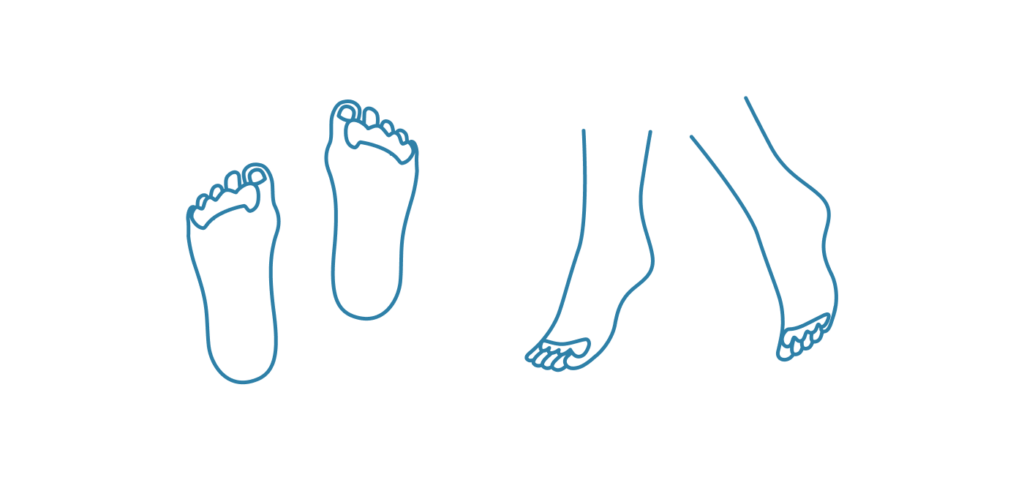 Using Correct Toes is one of the most powerful ways to support toe realignment during the transition from conventional footwear to natural shoes. Correct Toes naturally curb overpronation and enable proper weight distribution. This extremely helpful product also encourages a natural strengthening of the muscles and tendons that act on your feet and toes.
Using Correct Toes is one of the most powerful ways to support toe realignment during the transition from conventional footwear to natural shoes. Correct Toes naturally curb overpronation and enable proper weight distribution. This extremely helpful product also encourages a natural strengthening of the muscles and tendons that act on your feet and toes.
Correct Toe’s toe spacers work well in shoes with anatomically appropriate toe boxes (i.e., toe boxes that are widest at the ends of the toes, not the ball of the foot as in conventional—and many minimalist—shoes).
Met pads and heel cups can also be beneficial during your transition, especially if you’re experiencing foot pain. Met pads can help spread the transverse foot arch, alleviating some pain. While heel cups can counter tenderness in the heel which might emerge from the lack of cushioning in minimalist shoes.
Step 7: Perform Key Home Care Foot Exercises
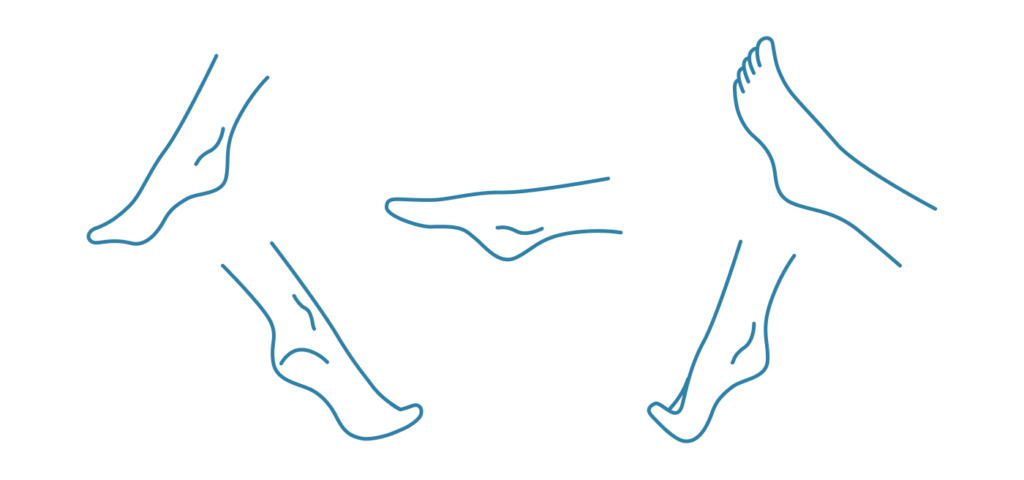 While minimalist shoes help restore natural foot function, complementary exercises can enhance this process.
While minimalist shoes help restore natural foot function, complementary exercises can enhance this process.
Try exercises like “toe yoga” where you try to lift each toe individually. This can be harder than it sounds but is excellent for mobility and dexterity.
Practice arch lifts, where you attempt to raise the arch of your foot while keeping your toes and heel on the ground. This strengthens the muscles supporting your arch and reduces the risk of conditions like plantar fasciitis.
Home-based foot exercises like the Toe Extensor Stretch or foot strengthening routines can expedite the transition. Consistent foot exercises are vital for optimal foot strength and function.
Remember, your feet are connected to the rest of your body. Incorporating whole-body exercises, like squats or lunges, ensures that your entire body, from feet to core, works in harmony.
Step 8: Listen to Your Body and Be Patient
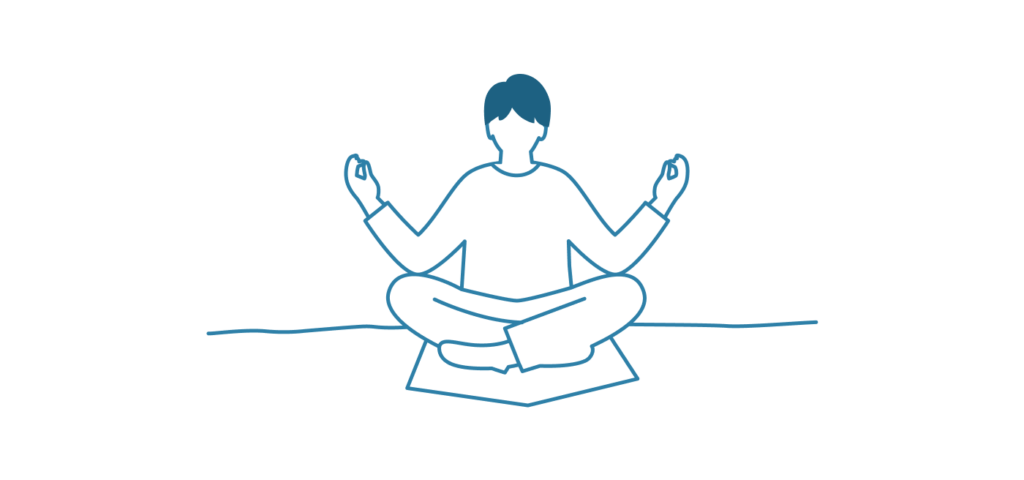 Your body is pretty smart, especially your feet. If they feel sore, they’re trying to tell you something.
Your body is pretty smart, especially your feet. If they feel sore, they’re trying to tell you something.
Your feet will be your guide throughout this change. Sensations of soreness or discomfort are signals to slow down. Maybe they need a rest, or perhaps it’s an adjustment phase.
Just remember, there’s no universal timeline. Some may trot happily within weeks; others might take months. Your journey is uniquely yours. Keep an eye on the prize: lasting comfort and pristine foot health.
Why Wear Barefoot Shoes?
If you’ve ever yearned for the sensation of walking or running barefoot without getting your feet dirty or injured, then barefoot shoes, or minimalist shoes, might be your answer. Here’s why: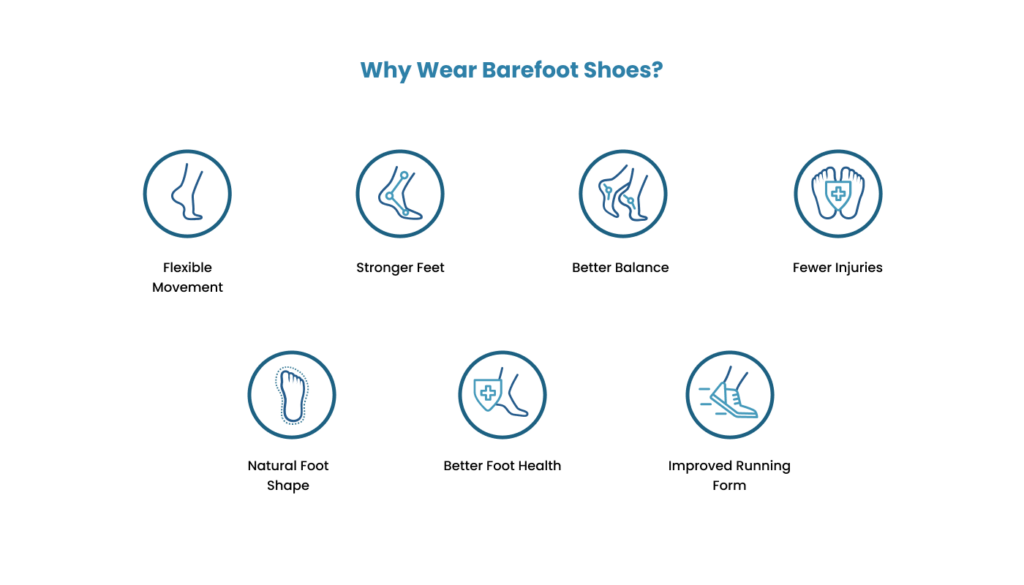
1. Flexible Movement
Barefoot shoes have flexible soles, unlike traditional running shoes. This means you get a closer feel of the ground and your feet can move more naturally, just like when you’re barefoot. The design promotes a natural movement, allowing your feet to bend, flex, and feel the terrain beneath you.
2. Stronger Feet
With minimalist footwear, your foot muscles get a real workout. Shoes that have a lot of cushioning don’t allow your feet to feel and react to the ground and this causes the muscles in your feet to weaken. But in barefoot shoes, your foot muscles are allowed to work as nature intended, leading to increased foot strength over time.
A study in the Journal of Sports Science and Medicine noted that minimalist shoes can improve running economy and even increase the cross-sectional area and stiffness of the achilles tendon.
3. Better Balance
Wearing barefoot shoes not only boosts your connection to the ground but also significantly improves your balance. With this increased sense of body awareness, you can navigate the world with more confidence, reducing the risk of trips and falls.
4. Fewer Injuries
Some people find they have fewer injuries when switching to barefoot shoes. This is because the footwear can lead to stronger foot and leg muscles, helping with shock absorption. The natural gait pattern you develop might also reduce stress on the knees and shins.
5. Natural Foot Shape
Barefoot shoes should come with a wide toe box, allowing your toes to spread out. This can prevent issues like bunions and hammertoes that are sometimes caused by tight, conventional shoes. The design respects the natural shape of the foot, letting it function as it was intended.
6. Better Foot Health
Many believe that allowing the foot to move naturally can promote overall foot health. Without restricting insoles and arch supports, the foot can move naturally, adapt, grow stronger, and potentially experience fewer problems.
7. Improved Running Form
Runners, in particular, might find that barefoot shoes help them develop a better running form. With a zero-drop design, the shoes encourage a midfoot or forefoot strike, which can be gentler on the joints than a heel strike.
The Journal of Sports Science and Medicine suggests that while minimalist shoes can lead to certain benefits in running form and economy, it might also increase loading on some joints compared to conventional shoes. Proper running form will ultimately be important to avoid these issues.
By considering these benefits and understanding your own foot’s needs, you can decide if barefoot or minimalist shoes are right for you. Remember, if you’re thinking of making the switch, it’s a good idea to transition gradually.
Key Takeaway
While the transition may have its challenges, the long-term benefits of wearing barefoot shoes—enhanced comfort, better posture, and natural foot movement and health—make the journey worth it.
Dive deeper into foot health and explore the products that can aid your transition on our Correct Toes website.
But keep in mind: Even if transitioning to barefoot shoes is a commendable start, a holistic approach to overall body health—including posture, balance, and strength—is essential for a functional life.


